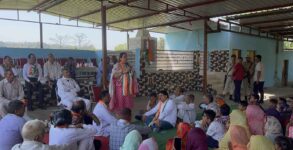The New Education Policy was launches on Wednesday, July 29. This policy aims to overhaul the country’s education system. The NEP 2020 aims at making “India a global knowledge superpower”. The new academic session will begin in September-October – the delay is due to the unprecedented coronavirus disease (Covid-19) outbreak – and the government aims to introduce the policy before the new session kicks in
One of the major announcements of the new National Education Policy 2020 is the breakdown of the much known pre existing 10+2 structure and the new introduction of 5+3+3+4 structure of school education.
This policy focuses on the more inclusive pedagogical structure which means that the actual system would not change, in terms of the years a child spends within the formal education system in the country at school level, the new structure brings into fold the already existing play schools within the ambit of ‘formal education’.
What is 10+2 to be replaced by 5+3+3+4 Pedagogical Structure?
Let’s start with explaining what the actual number of years means in this context, this means that the number of years remain the same and this does not mean additional years. It can be looked at play school, nursery or kindergarten classes combined with classes 1 and 2.
Earlier, if a student enter formal education at the age of 3 which means that the child needs to go through the 3 years of kindergarten but now new structure now proposes dividing the same structure into cognitive developmental stages of the child – early childhood, school years, and secondary stage.
Foundational Stage (5): For ages 3 to 8 years, the foundational stage has been suggested. The multi-level play activity based learning would include 3 years at anganwadi’s, pre-school or as commonly called play schools and the kindergarten classes catering to ages 3 to 6. To this, the grades 1 and 2 or classes 1 and 2 for students of ages 6 to 8 would also be added, keeping the focus on development of language skills and teaching by play based and activity based curriculum.
Preparatory Stage (3): This is for ages 8 to 11 or classes 3 to 5. The focus would shift to play, discovery and activity based and interaction classroom learning. The focus till this stage would remain on development of language and numeracy skills, in accordance with the cognitive development of a child. Medium of instruction till Grade 5 would be home language or mother tongue or local language. Three languages would be taught to all students – and states would decide which ones.
Middle Stage (3): Referring to the classes 6 to 8, the new structure aims at transforming the pedagogy from the existing system to a more experiential learning in the sciences, mathematics, arts, social sciences and humanities. Focus would be on critical learning objectives and not on rote learning.
Secondary Stage (4): This includes classes 9 to 12 or the secondary and the higher secondary as we know them today. The changes suggested at this stage include a multidisciplinary study where students would be able to pick and choose any set of subjects from the available structure. The focus would be on greater critical thinking and flexibility, allowing the child to pick subjects as per their interests – even technical and arts.


















